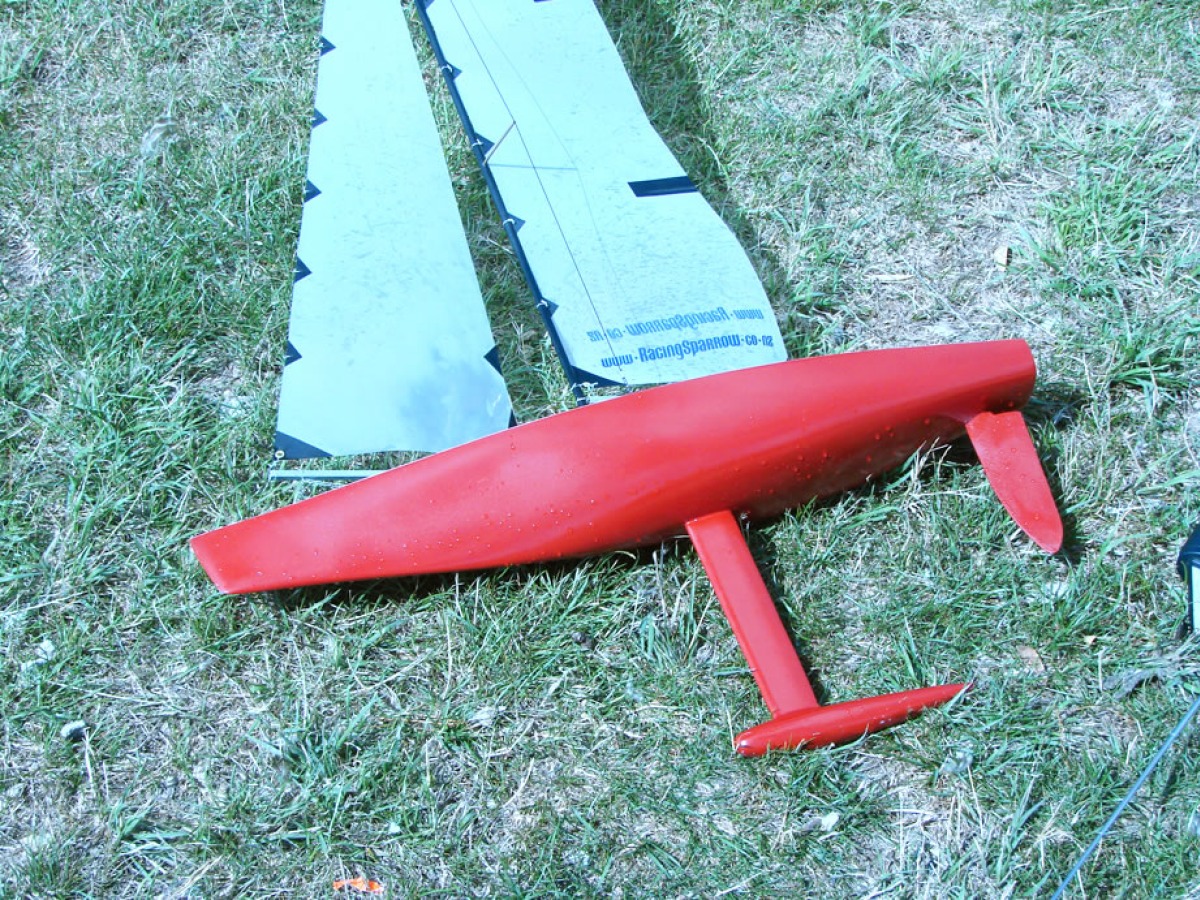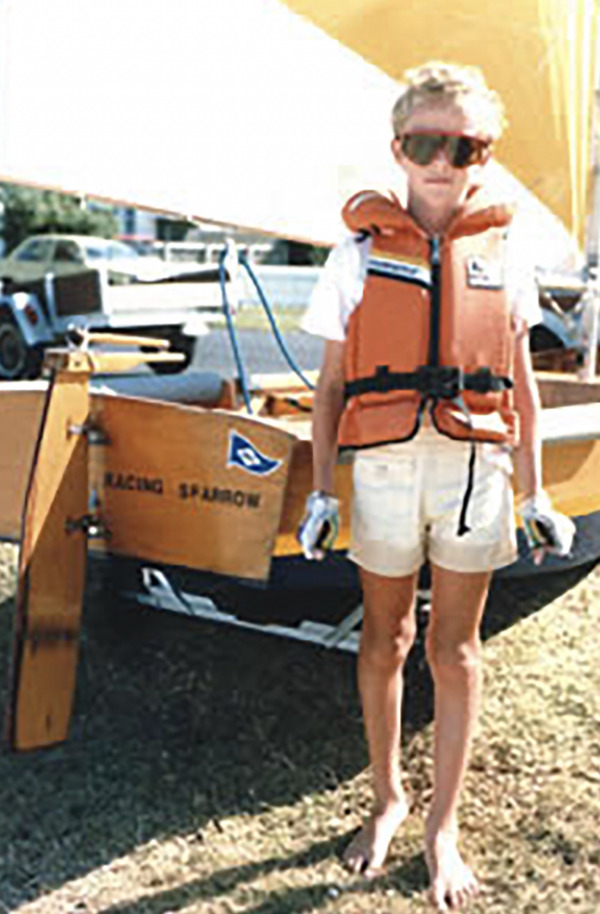The Design Rationale for the RacingSparrow 750
The Racing Sparrow is a model RC yacht designed by New Zealander Bryn Heveldt. Inspired by his early sailing experiences, Bryn created this yacht to make the excitement of model yacht building and sailing accessible to a broader audience.

What is a RacingSparrow
A RacingSparrow is a radio-controlled model yacht. It is designed to be a scratch-built model for home enthusiasts. It is aimed at beginners who have no experience with sailing or radio control equipment, or balsa wood for that matter. Let's dive in.
A Racing Sparrow model yacht is a great beginner's design that sits alongside a book written to guide someone through the whole build process.
The Model Yacht Hobby
Model Yachting is a well-established hobby or sport, as some would say. This established nature of the sport makes getting started a little bit intimidating for someone who is completely new and wants to get amongst it.
The whole reason the author Bryn Heveldt designed this boat and wrote the builder's guide was to counter this entry-level barrier, making the hobby accessible to anyone wanting a taste or, as Bryn says, "scratch that itch!"
The Racing Sparrow is a smaller model at 750mm in length. This size is good to keep costs down and enable easy transport. The size is also important to make the project feel like something you can complete and not be overwhelmed or feel out of your depth, excuse the pun here. The finished rigged model is still an impressive model that will give you immense pride, knowing you made that with your own hands.
To the newcomer, model yachting can seem overly complex, highly technical, and expensive. This really does not have to be the case. A model yacht can be simple, cheap, and a bit rough around the edges. The origins of sailing are people sailing dug-out trees with a flax bush woven into a basic cloth sail. These basic principles really can still apply to a model. It does not need to be an advanced piece of technology.
If you've ever tried to build a model glider or plane, you will have found out that the plane you build has to be very accurate, balanced, and carefully constructed for the thing not to crash in a screeching pile on the side of a hill. Model yachts, on the other hand, are very forgiving. The main concern is it being mostly waterproof. If it's a bit unbalanced either by weight or sail size, the boat will just sail a little slower; it won't crash! This makes it a lot more forgiving to simply give it a go without the flying anxiety.
Who designed the Racing Sparrow and when?

Bryn when he was 9 years old.
The Racing Sparrow was designed by Bryn Heveldt from New Zealand when he lived in Whanganui way back in 2001. He had some time at hand, and the original plans were lovely pencil lines drawn on a large A1 sheet of paper. Bryn is a qualified, experienced designer and also a dinghy sailor from a young age, competing at regattas and learned how to sail fast. With these two lifelong passions combined, he drew up the first prototype.
The first design was a little smaller, at about 700mm long. It had a larger, rounder hull with more buoyancy than the final result. It did sail quite well on local lakes, and this was a fantastic start. Bryn had some cool art student friends, in particular a dude called Hardy. He taught Bryn how to mold and cast metals like lead into torpedo shapes for the keel. All the various techniques needed to build a model were hard to source; Bryn needed to ask friends, read various books and magazines to find out all these required techniques. This is the moment Bryn came up with the idea of writing and illustrating a book to collate all this wisdom and knowledge into one place.
The Design Process
So Bryn took that prototype model, and over the next 5 years, much chin-scratching, designing, and trial and error occurred. The Racing Sparrow design went through a few iterations and on-water "tests" with some key considerations. The main consideration was the model needed to look awesome and sexy! The lines were refined, the sloped transom was added. The rig also needed to look balanced as well as be functionally balanced while sailing.
The next considerations for the design were the sailing balance, getting the boat to effortlessly sail in a straight line on its own. Get this right, and a model yacht sails fast. Bryn knew from sailing dinghies that the less you use the rudder, the faster you go. Each time you turn a boat, the rudder acts as a brake to some extent. A well-balanced yacht of any size will have a very neutral rudder balance. Bryn wanted the boat to not only look good but sail fast. Both very important aspects of successful boat design.
Once these things were solved, the next riddle to solve was how to make this thing easier to make, with less money and fewer tools. Every part of the project was given thought to minimize money. The use of hand tools only, the reduction in the variety of materials, and the recycling of things like dive belts for lead all make this project easier, cheaper, simpler. The main goal was for beginners to have access to a simple, fast, elegant model design and the instructions on how to build it cheap and easy.
The final big push of design saw Bryn spend a whole week on an island in the Marlborough Sounds in New Zealand. Completely cut off from the world with just his laptop and food supplies, he hired a small cabin in the woods and spent the week obsessing over the details, 3D illustrating and refining the drawings, and writing the text, which eventually became the final book of 52 pages. Even the amount of pages was kept as low as possible to make the project feel achievable to the end-user. Not what the publishers were wanting! They are in the business of moving more paper, but not Bryn; he had other ideas about that! That's a whole other blog post.
So, who should tackle this project? Do many people finish it?
This project is the perfect Father/Son project. It has also proved to be an excellent resource for a school class project. Bryn has had many teachers tell him about how it was used as a woodworking project, for instance. But really, this project was designed for the beginner who wants all the details in one handy publication, including the plans.
Over the years, hundreds of people have completed the build and sent in their photos. Bryn is always so stoked to receive these images as it gives him a great sense of satisfaction and validation for tackling such an ambitious undertaking in the first place. Bryn himself has built around 6 Racing Sparrow yachts, long overdue to build another!